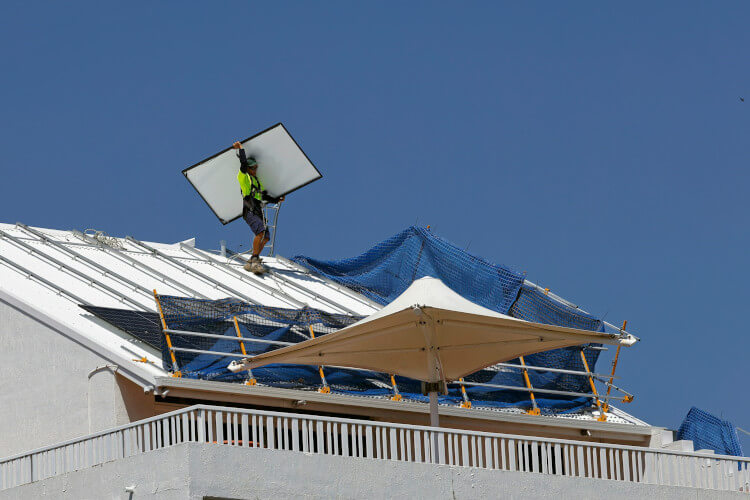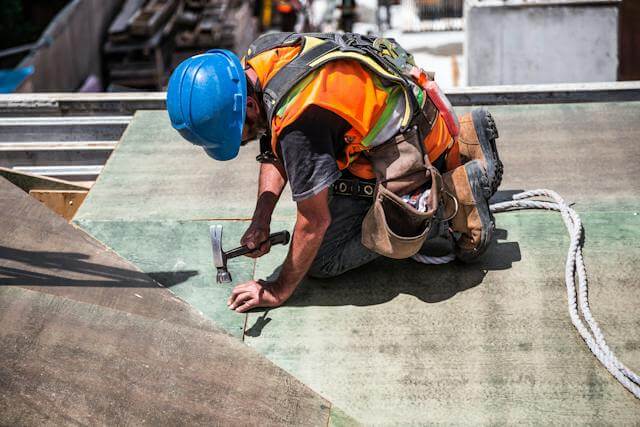
The biggest risk that roofers face is falling from height. Fortunately, there are several ways to control this risk and protect yourself / your employees during roof work.
If working on a roof is unavoidable, roofers must be provided with safe access to the roof level (via ladders, scaffolding, etc.) and a safe means of working, i.e. proper fall protection equipment such as a safety harness. More...

According to the HSE (Health and Safety Executive), in order to manage risk when working at height, you or an appointed competent person must complete the following steps:
- Carry out a working at height risk assessment
- Identify relevant precautions
- Produce a method statement
Let’s take a closer look at those three steps…
More...

What does working at height mean?
Working at height means any type of work where a person could fall from one level to another if the proper precautions are not taken, resulting in an injury. For example, if you are working on a ladder or a work platform, you are usually working at height.
Falls from height are among the leading causes of injury and fatalities at work. Those who work on ladders and fragile surfaces are especially at risk. This is why work at height is subject to so many rules and regulations.
However, this doesn't mean you have to be on top of a skyscraper to be working at height. Many of the same rules apply even when you're only a few inches off the ground. The meaning of working at height is that you are working on a raised level, but the height of the level can differ.
More...

Working at height equipment includes any product that has been specifically designed to enable a person to safely work at height.
More...

